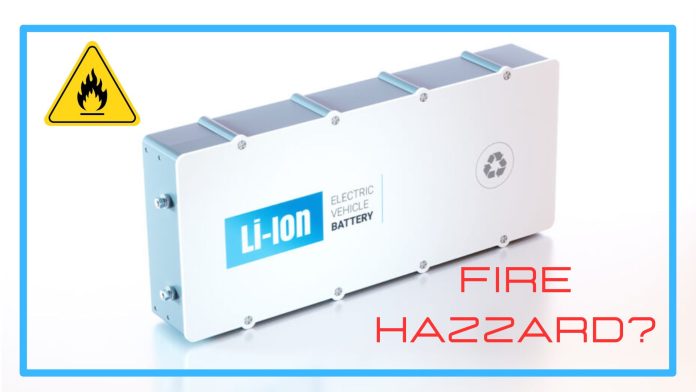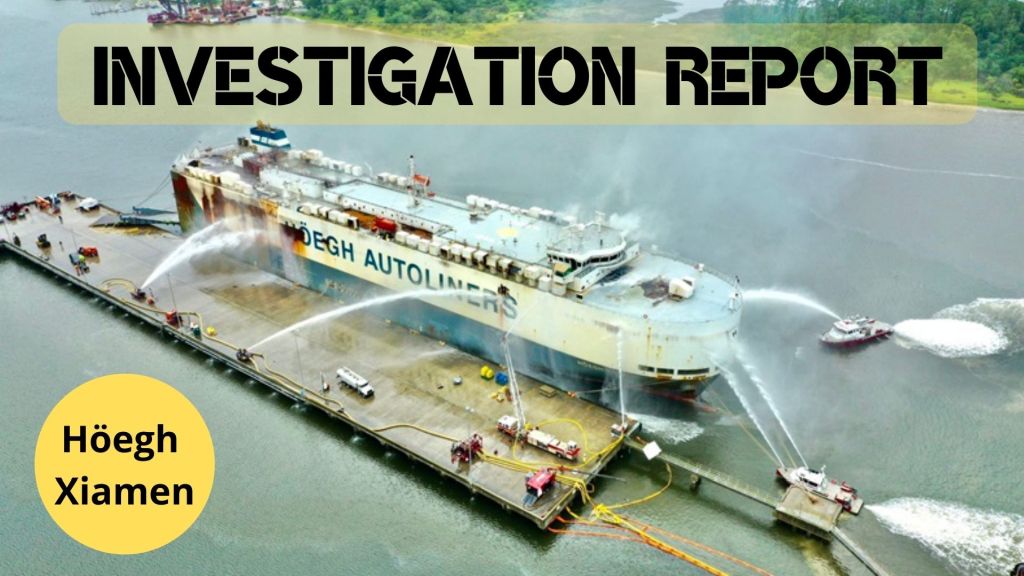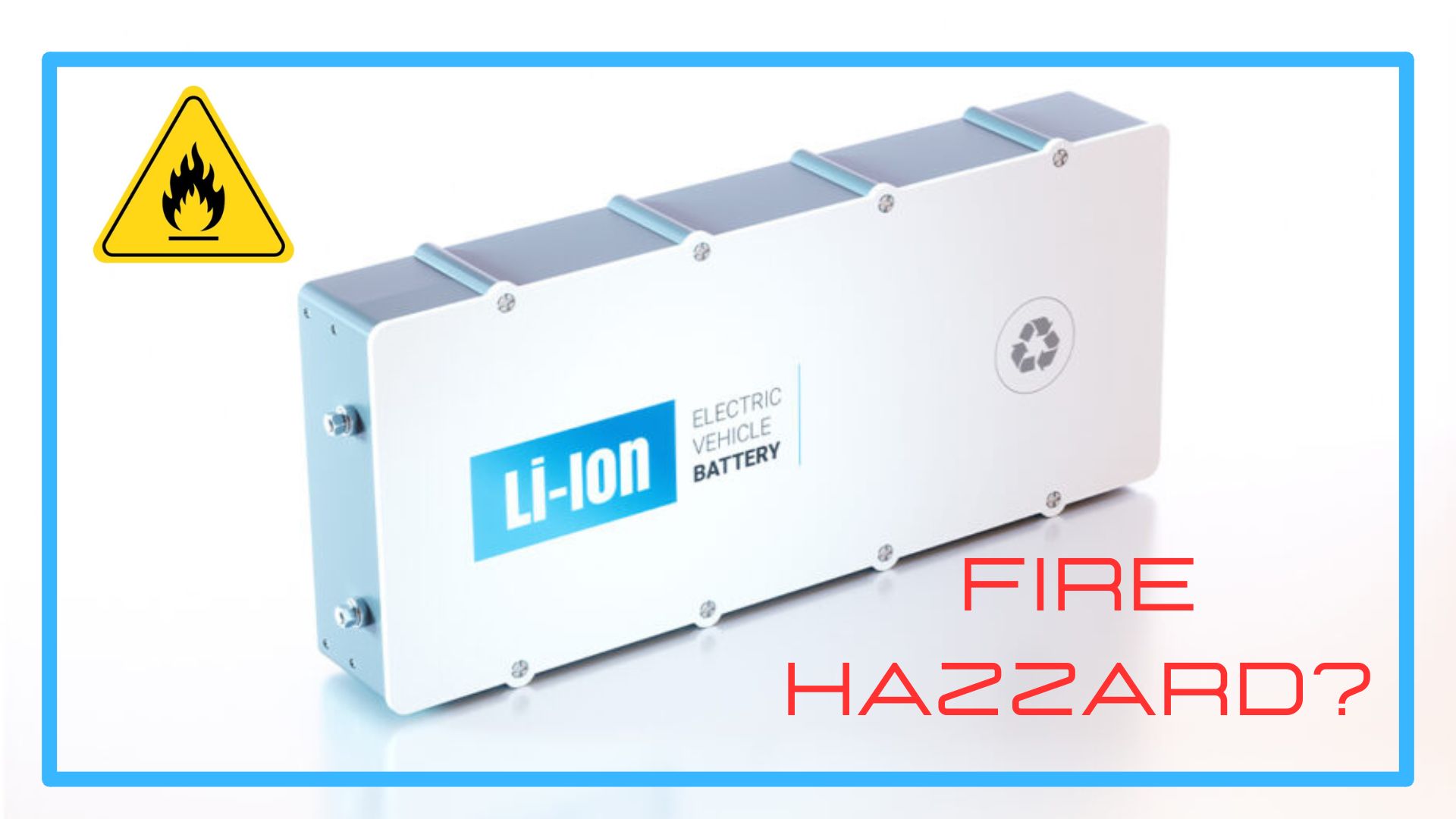
(www.MaritimeCyprus.com) In its Shipping and Safety Review 2023, Allianz Global Corporate & Specialty reported that the second top cause of loss of vessels in 2022 was fire or explosion. There were 209 ship fires reported during 2022, the highest in a decade and 17% more than in 2021. Of those fires, 13 occurred on car carriers. The fire was also reportedly the most expensive cause of marine insurance claims.
According to the Allianz report, a combination of causes is increasing the risk of fires at sea. Decarbonization, while a positive global development, has led to new types of cargo such as electric vehicles (EVs) and the prevalence of lithium-ion (Li-ion) batteries which pose a growing risk for container shipping and car carriers. The Li-ion market is expected to grow by over 30% annually over the next decade. Nearly 10% of global car sales were electric in 2021, four times the market share in 2019.
In March 2023, the European Maritime Safety Agency (EMSA) published its CARGOSAFE study, which assesses the risks associated with fires on container ships and evaluates prevention, detection, firefighting, and containment measures. The study indicated that the main cargo types identified as responsible for a large share of cargo fire accidents included Li-ion batteries.
Furthermore, the cause of many cargo fires can be attributed to mis-declared dangerous goods. By way of example, in August 2021, a container loaded with discarded Li-ion batteries, intended to be loaded on board a container ship bound for China, caught fire whilst being transported to the port. The bill of lading listed “computer parts,” not Li-ion batteries. The Cargo Incident Notification System (CINS) indicates that nearly 25% of all serious incidents onboard container ships can be attributed to mis-declared cargo.

The hazards
One of the main hazards of Li-ion batteries is ‘thermal runaway’, rapid, uncontrolled self-heating that can lead to fire and can cause an explosion. The main causes of Li-ion fires are said to be defective manufacturing or damaged battery cells or devices, over-charging, and short-circuiting. Fires in EVs with Li-ion batteries are hotter, take longer to extinguish, and can spontaneously reignite. They can also release poisonous, irritating or corrosive gases that cause an explosion in a confined space.
Some recent shipping fire incidents
In July 2023, a fire broke out on board the Panamanian-registered car carrier Fremantle Highway off the Dutch coast. The vessel was en route from Germany to Egypt. One crew member died, and many others were hospitalised. The fire took several days to bring under control. The industry press reported that almost 500 of the cars on board (over 3,700 in total) were EVs.
At the time of writing, an investigation had been launched by the Panamanian authorities and the Netherlands was assisting with the inquiry. While the cause of the fire remained unconfirmed, there was some suggestion in the industry press that the fire started in the Li-ion battery of one of the EVs.
In February 2022, the Japanese RoRo cargo ship Felicity Ace was carrying thousands of luxury cars from Germany to the USA but sank off the coast of the Azores after a fire broke out onboard. The fire burnt for about two weeks, after which the vessel sank. The Panamanian Maritime Authority reportedly submitted its report to the International Maritime Organisation (IMO) in May 2023 but the findings had not yet, at the time of writing, been made publicly available. However, within the industry, the cause of the fire is suspected to be the EVs that were onboard.
In June 2020, the Hoegh Xiamen caught fire in Jackson, Florida. It was carrying almost 2,500 used vehicles on board. The fire took over a week to extinguish and there was a total loss of the vessel and cargo. The US National Transportation Safety Board (NTSB)investigation indicated that the fire started due to an electrical fault from an improperly disconnected battery in a used vehicle.
In May 2019, two fires broke out on board the Grande Europa while the vessel was off the Spanish coast. The owners’ preliminary investigations suggested that the two fires started in two new vehicles stowed on board and then spread to other vehicles.
In March 2019, a fire broke out on board the Grande America while on a voyage from Germany to Morocco. The cargo included over 2,000 new and used vehicles. The vessel subsequently sank. The owners have submitted a report to the IMO but the findings are not at the time of writing publicly available. However, it has been reported that fire teams found sparks coming from a truck on a vehicle deck.
Industry guidance and engagement
In March 2023, CINS – in collaboration with the International Group (IG) of P & I Clubs, the TT Club and the International Cargo Handling Coordination Association - published revised guidelines for the carriage of Li-ion batteries in containers. The guidelines identify risks and prevention measures, with recommendations for all stakeholders in the supply chain to enhance safe carriage. Among other things, the guidelines cover cargo issues; container selection; cargo container packing; Li-ion battery stowage on the ship; fire detection and loss prevention.
Additionally, in March 2023, the IG, CINS and the TT Club jointly hosted an industry conference in London entitled “Lithium-ion batteries in the logistics supply chain”. This was attended by representatives from regulators, container and vehicle carriers, as well as fire investigation and fire-fighting experts among others.
In November 2022, the TT Club, the UK P & I Club and Brookes Bell issued a Lithium Batteries White Paper highlighting the safety risks of transporting Li-ion batteries. The paper includes background science on Li-ion batteries, the dangers associated with transporting them and why they arise, battery testing and correct declaration. It also reviews the applicable provisions of the International Maritime Dangerous Goods (IMDG) Code and other relevant regulations.
In May 2022, EMSA published Guidance on the Carriage of Alternative Fuel Vehicles in RoRo spaces of Cargo Ships and Passenger Ships. This covers among other things: risk evaluation; stability checks; precaution against ignition; detection; and fire suppression.
In 2021, the UK Maritime and Coastguard Agency (MCA) published a marine guidance note (MGN 653(M)) on “Electric Vehicles onboard Passenger RoRo Ferries”. MGN 653(M) notes that, at the time of publication, there were no requirements from the IMO specific to the carriage of EVs on passenger or cargo RoRo ships.
In 2017, the UK P & I Club – in conjunction with SOLIS and Richards Hogg Lindley - published “Car Matters: Car Carriers, Ro-Ro and Ro-Pax Ship Safety – A Guide for Crew.” This covers among other things operational best practices and general safety precautions.
There are also technological developments underway. In February 2023, the Cargo Fire & Loss Innovation Initiative was launched by Safetytech Accelerator. This is a technology acceleration initiative in collaboration with Evergreen Line, HMM, Lloyd’s Register, Maersk, the Offen Group, ONE and Seaspan that is aimed at reducing cargo fires and losses overboard. The initiative is particularly focused on challenges caused by the increasing carriage of Li-ion batteries either in containers or within EVs on car carriers.
Regulation
The relevant regulations are contained in the IMDG Code and are based on the UN Model Regulations on the Transport of Dangerous Goods, adopted and adapted as appropriate. The UN Regulations cover requirements for the construction and testing of batteries, classification and declaration of shipments, packaging and stowage.
Li-ion batteries are classified as Class 9 goods in the IMDG Code due to the hazardous properties associated with their chemical and electrical content. Pursuant to the Code, the shipper must provide the vessel with a completed Dangerous Goods (DG) cargo declaration. Furthermore, each vessel has a Document of Compliance for dangerous cargo (DOC), which indicates where the batteries can be safely stowed onboard. However, under Special Provision (SP) 188 of the UN Regulations, where Li-ion batteries meet eight specified requirements (essentially relatively small batteries), they are not considered DG and do not have to be specially declared. One concern is that SP188 may encourage shippers to mis-declare cargo.
A prevailing view within the maritime industry is that the IMDG Code needs to be amended to bring it into line with the challenges arising from the carriage of EVs and Li-ion batteries. It has been suggested that Li-ion batteries are not properly categorised as Class 9, which covers the lowest-risk DGs. Under this classification, the batteries can be stowed above and below deck, and with other dangerous goods. It has been proposed instead that they should be reclassified to Class 4.3 - flammable solids (which, when in contact with water, emit flammable gases). This would subject them to much more stringent segregation requirements.
EVs are also categorised as Class 9 unless they come within SP 961. SP961 disapplies the Code to EVs carried in the vehicle and RoRo spaces when certain conditions are met. In such cases, the carrier will not usually know how many EVs are onboard or where they are located on the vessel. The White Paper referred to above has recommended revoking this exemption to allow carriers to plan stowage locations and the monitoring of EVs during the voyage in greater detail, with a view to developing early detection, evacuation and/or firefighting procedures.
Onboard charging of EVs on RoRo passenger ships is currently unregulated. This poses a risk of over-charging, which can trigger thermal runaway. Furthermore, there are currently no regulations dealing with the state of charge for Li-ion batteries on ships. A recommendation made to the IMO is for a 30% limit for EVs.
Used batteries may also qualify as hazardous waste under the Basel Convention on the Control of Trans-boundary Movements of Hazardous Wastes and their Disposal. In May 2022, the UN provided a draft of practical guidance on the classification of waste batteries containing lithium. Carriers will need to ensure that shippers provide all the necessary export and clearance documentation for the batteries and/or a written declaration that they are not considered waste under the Convention. Otherwise, problems may be encountered at the discharge port.
In 2021, at the 103rd session of the IMO’s Maritime Safety Committee (MSC 103), it was agreed that changes should be made to the SOLAS (Safety of Life at Sea) Regulations for better fire detection, containment, and suppression on container ships. The work on this is expected to be completed by 2025, with any amendments however coming into force at the earliest 1 January 2028.
In June 2023, MSC 107 approveddraft amendments to SOLAS and related instruments to enhance the fire safety of RoRo passenger ships. The draft amendments are expected to enter into force on 1 January 2026, assuming that they are adopted by MSC 108 in May 2024.
There have been reports that the IMO is considering a special code for EVs. However, at the time of writing, the position remained unclear.
Legal issues
The Hague/Hague-Visby Rules are likely to apply to the contract of carriage. Pursuant to Article III Rule 1, the carrier has a due diligence obligation to make the vessel seaworthy and to properly man, equip and supply the vessel. Article III Rule 2 sets out the carrier’s obligation to take reasonable care of the cargo. This obligation is subject to certain exceptions set out in Article IV, including the fire exception in Article IV Rule 2b. Article IV rule 6 provides for the shipper’s indemnity in the case of dangerous goods, where that have been shipped without the carrier’s knowledge or consent.
A number of issues can arise with regard to unseaworthiness, including that: dangerous cargo can, of itself, make a vessel unseaworthy; faulty systems can make a vessel unseaworthy; and crew without proper training can make a vessel unseaworthy. Whether the carrier acted as a prudent owner can be a complex question because it may not be clear before or at the commencement of the voyage that a battery forming part of the cargo was defective and the carrier will not usually check on the contents of a container itself. Instead, it will rely on the documentation provided by the shipper. Nonetheless, in the context of unseaworthiness, hidden dangers are relevant.
As to the exercise of reasonable care in taking care of the cargo, given that the current regulatory regime for the carriage by sea of EVs and Li-ion batteries is arguably inadequate, complying with the regulations may not be enough. Query whether a prudent owner should refuse to carry EVs/Li-ion batteries at all, although this may not be a realistic option given their increasing use and the continuing growth of the market.
Instead, a carrier may focus on ensuring it keeps up-to-date and complies with industry guidance, obtains expert risk assessments and establishes internal processes for identifying the contents of containers and where to stow EVs and Li-ion batteries. It has also been suggested that carriers should not allow onboard charging, although they will come under a lot of pressure from charterers/shippers if they do not. An owner may also wish to liaise with its P & I Club on appropriate measures to ensure that its cover remains in place.
The shipper’s liability for shipping dangerous goods without the carrier’s knowledge or consent is a strict one. However, the indemnity will not be engaged where the loss has been caused by the carrier’s failure to exercise due diligence. It is, therefore, in the shipper’s interest to provide all the relevant documentation and make the relevant declarations with regard to the cargo. This may minimise its exposure as to lack of carrier knowledge/consent and will allow the carrier to stow the goods appropriately and take any necessary precautionary measures.
Comment
It is to be hoped that Li-ion fire risks will reduce over time as manufacturers, carriers, and regulators address the current challenges. In the meantime, there is an ongoing debate in the maritime industry about whether there should be dedicated RoRo vessels for EVs. This is something that insurers say they would like to see.
Another future consideration is how the risks associated with the carriage of EVs and Li-ion batteries will be dealt with on autonomous ships. Where there are no, or few, human crew onboard, will this make it harder to fight any resulting fires? Technological advances in shipping are to be welcomed and are the way forward, but they do present the industry with novel challenges.
Source: Paul Crane and Reema Shour, Ince & Co.
Read more on Lithium-Ion batteries HERE













